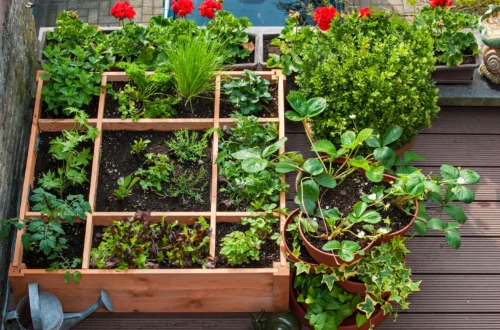Composting is one of the best ways to reduce waste, nourish your plants, and contribute to a healthier planet — even if you live in an apartment! Apartment composting may sound challenging due to limited space and the absence of a yard, but with the right methods and tools, it’s totally doable. This guide will walk you through everything you need to start composting in your apartment, step by step.
Why Composting Matters
Composting turns food scraps and organic waste into nutrient-rich soil that can be used to feed your apartment garden or houseplants. It reduces the amount of trash you send to landfills, decreases greenhouse gas emissions, and helps close the loop in your food cycle by recycling nutrients back into the soil.
Step 1: Choose Your Composting Method

Several composting methods work well in apartments:
- Indoor Compost Bin: A small, sealed container with a lid that keeps odors in and pests out. Perfect for kitchens and balconies.
- Worm Composting (Vermicomposting): Using red worms to break down food scraps quickly. Requires a worm bin and some care but produces rich compost and worm tea.
- Compost Tumbler: A rotating container that aerates compost easily. Some compact models fit well in balconies or patios.
- Bokashi Composting: A fermentation method using special microbes to break down food waste quickly indoors. It requires a Bokashi bucket and can handle meat and dairy scraps, which traditional composting can’t.
Choose the method that fits your space, lifestyle, and what types of waste you want to compost.
Step 2: Gather Your Composting Supplies

Depending on your chosen method, you’ll need:
- A compost bin or container with a lid (for indoor bins or Bokashi).
- Red wiggler worms if you choose vermicomposting.
- A scoop or small shovel for mixing.
- Compostable liners or newspaper (optional, for worm bedding).
- A spray bottle for moisture control.
Make sure your bin has ventilation to prevent odors and help the composting process.
Step 3: Know What You Can Compost

Good composting requires a balance of “greens” (nitrogen-rich materials) and “browns” (carbon-rich materials):
Greens: Fruit and vegetable scraps, coffee grounds, tea bags (without staples), crushed eggshells, fresh grass clippings, and plant trimmings.
Browns: Dry leaves, shredded newspaper, cardboard, paper towels, sawdust, and small amounts of shredded paper.
Avoid composting meat, dairy, oily foods, and pet waste unless you’re using Bokashi, which can handle these safely.
Step 4: Start Composting
- Add your food scraps and brown materials in layers or mix them as you go.
- Keep the compost moist, like a wrung-out sponge. Use a spray bottle to add water if it gets dry.
- If you’re vermicomposting, feed your worms regularly but don’t overfeed.
- Turn or aerate the compost every week or so to speed decomposition and prevent smells.
Step 5: Harvest Your Compost
After a few weeks to a few months (depending on your method and conditions), your compost will turn into dark, crumbly, earthy-smelling soil. This “black gold” is perfect to mix into potting soil, feed your apartment plants, or enrich your balcony garden.
Tips for Successful Apartment Composting
- Avoid overloading your compost with too many wet scraps at once.
- Keep the bin in a convenient, well-ventilated spot like under the sink, on the balcony, or near your kitchen.
- Use a tight-fitting lid to prevent odors and pests.
- Add shredded paper or cardboard if your compost gets too wet or smelly.
- Be patient—composting is a natural process that takes time, but it’s worth it!
Why Apartment Composting Is Worth It
Starting an apartment compost system is a simple way to live more sustainably, reduce waste, and nurture your indoor or balcony garden with homemade fertilizer. It connects you to nature’s cycles, even in the heart of the city, and helps create a greener future for all.
Ready to turn your kitchen scraps into garden gold? Get your compost bin ready and start composting today!
Infographic Outline: Apartment Composting Made Easy
How to Start Composting in Your Apartment
- Choose Your Composting Method
- Indoor Compost Bin
- Worm Composting (Vermicomposting)
- Compost Tumbler
- Bokashi Bucket
- Gather Supplies
- Compost bin with lid
- Red wiggler worms (if vermicomposting)
- Spray bottle for moisture
- Compostable liners or shredded paper
- What to Compost
- Greens: Veggie scraps, coffee grounds, eggshells
- Browns: Dry leaves, shredded paper, cardboard
- Avoid: Meat, dairy (unless using Bokashi)
- How to Compost
- Add greens and browns in layers or mix well
- Keep moist like a wrung-out sponge
- Turn or aerate weekly
- Feed worms regularly (if vermicomposting)
- Harvest Compost
- Wait 4-12 weeks
- Use dark, crumbly soil to feed plants and gardens
- Tips for Success
- Don’t overload with wet scraps
- Keep bin ventilated and covered
- Add shredded paper if too wet
- Be patient and enjoy the process!





